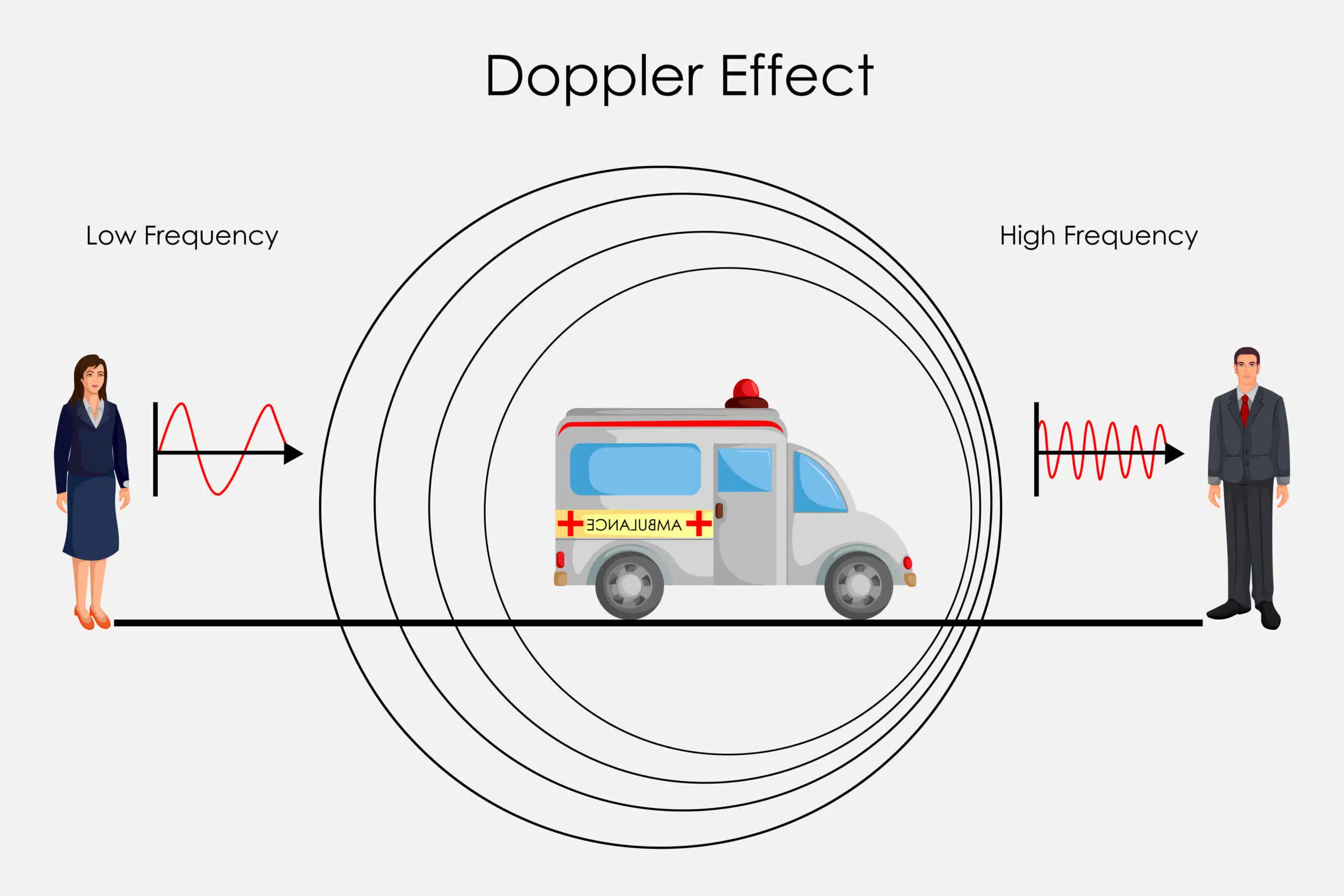This phenomenon was discovered by Christian Andreas Doppler and is named after him. On the occasion of Doppler's birthday, which is celebrated on November 29, Prof. Nadav Schnerev from the Physics Department at Bar-Ilan University writes about the man and the effect

If you have ever stood on the side of a highway, or an ambulance passed you by at high speed, you must have noticed the change in tone that occurs exactly when the vehicle or the siren passes you by: the noise "drops" sharply from high to low tones, from treble to bass. This phenomenon was discovered by Christian Andreas Doppler and is named after him. On the occasion of Doppler's birthday, which is celebrated on November 29, Prof. Nadav Schnerev from the Physics Department at Bar-Ilan University writes about the man and the effect.
A sound wave is a cyclical phenomenon. If we could see density changes in the air, we would see between us and the siren areas of high density and areas of low density moving towards us, just like areas of high water and low water in the sea. Let's say we are standing in the shallow waters of the beach and a wave hits us every 20 seconds, what would happen if we took a speedboat and sailed straight into the sea? Of course, we will encounter many more waves every twenty seconds, because when the waves are moving towards the shore, we are moving in the opposite direction. If we return from the depth of the sea towards the shore, the situation will be reversed - now we will be hit by a wave every 30 or 40 seconds, since we are "running away" from the waves that come from the depth of the sea.
The number of waves (water waves, sound waves or light waves) that hit us during a given time is called the frequency of the wave. Voice tone (bass, tenor, soprano), or the color of the light (green, red) are determined by the frequency. This is the Doppler effect: when we move towards the source of the wave, or when the source of the wave moves towards us, the frequency increases, while when the source of the wave moves away from us, the frequency decreases. The moment the ambulance siren passes us, it stops approaching and starts moving away, so our ears feel the tone drop.
When Doppler discovered the effect, in 1842, cars and ambulances had not yet been invented. But the first trains had already appeared, and an experiment was conducted in the Netherlands: a group of horn players were loaded onto an open train car who played a certain note with all their might, and a group of musicians with absolute hearing were stationed on the side of the track. The first experiment failed because the musicians got wet from freezing rain and could not jam as intended, but another experiment conducted in the summer produced the result that is experienced today by anyone standing at a bus stop on a highway.
happy ending? God forbid. Doppler suffered a lot from the persecutions of another scientist, Josef Pazval, who claimed that Doppler's calculations were too simple and did not contain differential equations, therefore they must be wrong. He summoned Doppler, who was suffering from terminal tuberculosis, to a series of public debates, and when poor Doppler decided to move to Venice where the climate was healthier, everyone believed he was just making excuses to get away. Even Doppler's death after four months did not convince his colleagues, who thought that it was also some kind of trick.
But the truth ends up gaining recognition, even if belatedly. The Doppler effect is used today in almost every situation where waves are used to detect speed: doctors use it to analyze the blood flow in your heart, astronomers find out which stars are moving away from us and which ones are coming closer, engineers analyze the vibrations of airplane engines, meteorologists measure the speed of clouds and precipitation and of course - the police use it to find out the speed of your car. A common legend tells of a physicist who was caught by a policeman for running a red light and claimed in his defense that because of the Doppler effect, resulting from the movement of his car in relation to the traffic light, the light appeared to him to be green. Only thanks to Doppler's formulas is it possible to understand that this can indeed happen - but unfortunately with their help it is also possible to calculate the monstrous fine that the physicist will pay for traveling at excessive speed.
